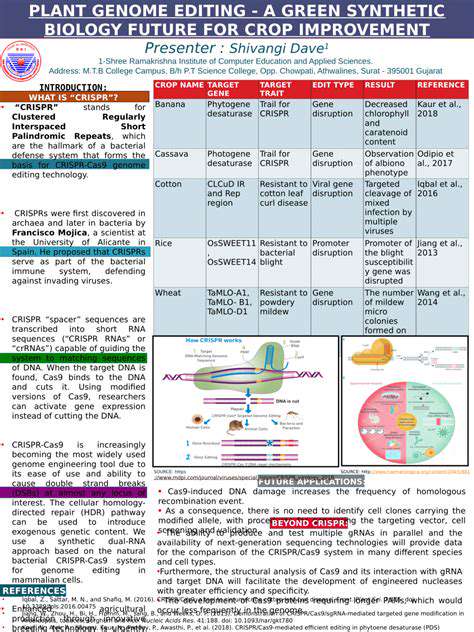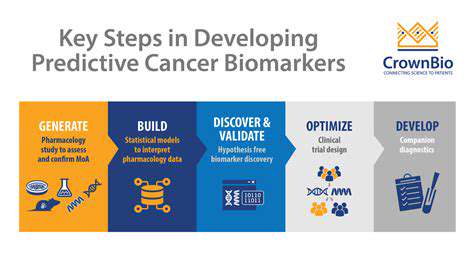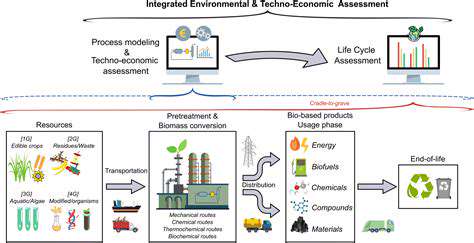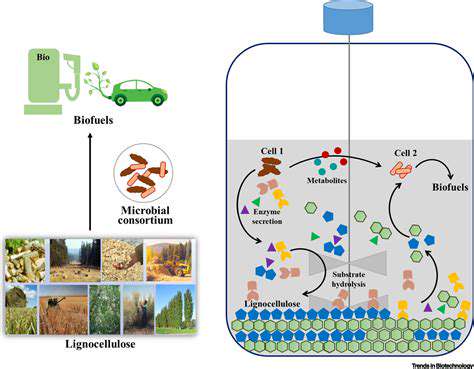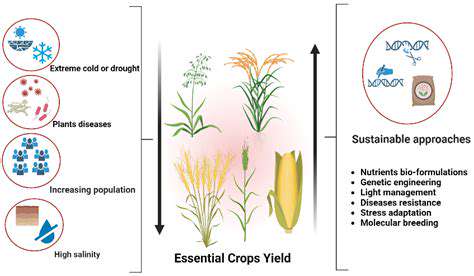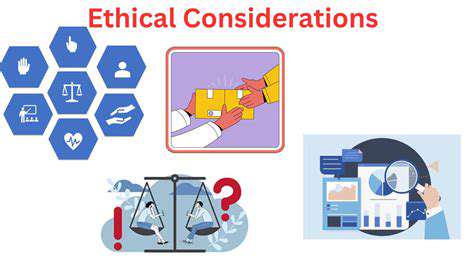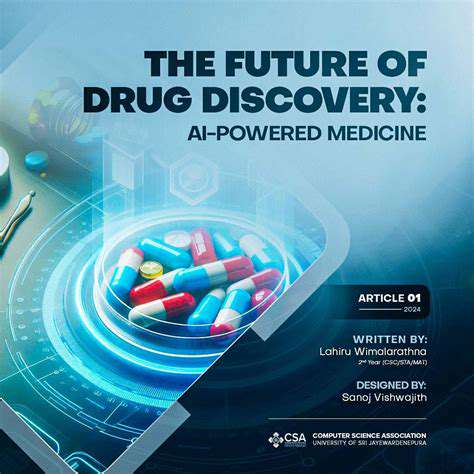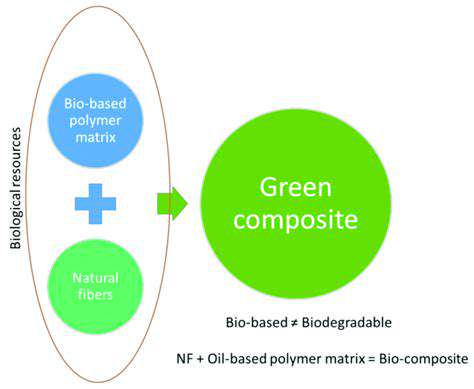Biomanufacturing's Impact on Efficiency
Biomanufacturing, a rapidly evolving field, is poised to revolutionize industrial production by leveraging biological systems for creating valuable products. This innovative approach offers significant advantages over traditional methods, particularly in terms of efficiency and sustainability. Biomanufacturing processes often utilize microorganisms, enzymes, or cells to synthesize desired molecules, which can be far more efficient than chemical synthesis, reducing the need for harsh chemicals and energy-intensive procedures. This translates to lower production costs and a smaller environmental footprint, making it a crucial component of a sustainable future.
The precision and control inherent in biomanufacturing allow for the production of highly specific and complex molecules. This precision is a game-changer in industries like pharmaceuticals, where the creation of tailored drugs and biomaterials is essential. The ability to precisely manipulate biological systems enables the production of molecules that are difficult or impossible to create using traditional methods. This opens up new possibilities for personalized medicine and the development of novel materials.
The Role of Biomanufacturing in Sustainability
One of the most compelling aspects of biomanufacturing is its potential to contribute to a more sustainable future. By reducing reliance on fossil fuels and hazardous chemicals, biomanufacturing processes can minimize the environmental impact of industrial production. This focus on sustainability is becoming increasingly important, as consumers and investors alike demand environmentally responsible practices. Biomanufacturing provides a pathway to a circular economy, where resources are reused and waste is minimized.
The use of renewable feedstocks in biomanufacturing processes further enhances its sustainability profile. Using agricultural waste, algae, or other renewable resources as inputs can significantly reduce the carbon footprint of production. This shift towards renewable resources not only benefits the environment but also creates opportunities for economic growth in rural communities and reduces reliance on finite resources. Furthermore, biomanufacturing can contribute to a more circular economy by utilizing waste products as feedstocks or by creating bio-based materials that can be easily recycled or composted.
Biomanufacturing's Potential in Various Industries
The applications of biomanufacturing extend far beyond the pharmaceutical industry. The technology's potential is being explored in various sectors, including food production, biofuels, and bioplastics. In the food industry, biomanufacturing can lead to the development of novel ingredients, improved nutritional profiles, and reduced food waste. The production of biofuels, derived from renewable biomass, can help mitigate our reliance on fossil fuels and transition towards a more sustainable energy future.
Biomanufacturing also holds significant promise for the production of bioplastics, which are biodegradable and environmentally friendly alternatives to traditional plastics. This could revolutionize the packaging industry and reduce the reliance on non-biodegradable materials. These innovative applications demonstrate the broad reach and transformative potential of biomanufacturing across diverse industries, suggesting that this technology will play a significant role in shaping the future of production.
Biomanufacturing's ability to create customized products for various industries is remarkable. From personalized medicine to sustainable materials, biomanufacturing's versatility promises a future where products are designed and manufactured with unprecedented precision and efficiency, ultimately reducing waste and promoting sustainability. This potential to tailor products for specific needs is a key driver of its growth and application in diverse industrial sectors. The ability to design and produce specific biomolecules for specific applications will be a significant advantage in the years to come.
Today's shoppers increasingly vote with their wallets, favoring brands that align with their environmental values. A 2023 Nielsen study revealed 73% of global consumers would change purchasing habits to reduce environmental impact. This shift manifests most visibly among millennials and Gen Z, who consistently prioritize sustainability when selecting beverages.
Bioremediation: Cleaning Up Our Planet
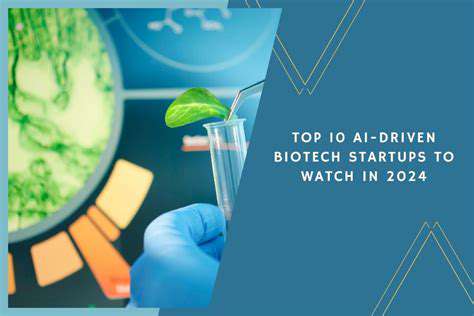
Bioremediation: Harnessing Nature's Power
Bioremediation is a revolutionary approach to environmental cleanup, leveraging the inherent capabilities of living organisms to break down pollutants and restore contaminated environments. This sustainable process, often employing microorganisms like bacteria and fungi, offers a gentler and more environmentally friendly alternative to traditional methods. It's a promising solution for addressing a wide range of environmental problems, from oil spills to industrial waste.
By introducing specific microorganisms to contaminated sites, the process encourages the breakdown of harmful substances into less toxic or non-toxic components. This natural decomposition significantly reduces the need for costly and potentially harmful chemical interventions. This natural approach is often more economical in the long run than other methods and can minimize the environmental impact associated with traditional remediation efforts.
Types of Bioremediation Techniques
Several bioremediation techniques are employed, each tailored to specific contaminants and environmental conditions. These methods include bioaugmentation, where specific microorganisms are added to the contaminated site to enhance their activity, and biostimulation, which involves stimulating the growth of existing microorganisms by improving environmental factors like nutrient availability. Each technique has its own advantages and limitations, and the most effective approach often depends on a detailed site assessment and understanding of the contaminants present.
Another important technique is phytoremediation, which utilizes plants to absorb and remove contaminants from the soil. Plants can accumulate heavy metals, organic compounds, and other pollutants in their tissues, effectively removing them from the environment. This method offers a cost-effective and aesthetically pleasing approach to cleanup, especially in areas with significant plant life.
Factors Affecting Bioremediation Success
The success of a bioremediation project hinges on various factors, including the type and concentration of pollutants, the characteristics of the contaminated soil or water, and the presence of appropriate microorganisms. Environmental conditions like temperature, pH, and oxygen availability also play a crucial role in determining the effectiveness of the process. Careful consideration of these factors is essential for optimizing the process and ensuring a successful outcome.
The presence of nutrients like nitrogen and phosphorus can drastically affect the growth and activity of the microorganisms, ultimately impacting the rate at which pollutants are broken down. A comprehensive understanding of these factors is critical to designing an effective bioremediation strategy.
Challenges and Future Directions
While bioremediation offers significant advantages, challenges remain. The process can be slow, requiring extended periods to achieve complete remediation. In some cases, the breakdown of pollutants may produce intermediate compounds that are equally or more harmful than the original pollutants, necessitating careful monitoring and control. Furthermore, the effectiveness of bioremediation can be impacted by the complexity of the contaminated sites.
Future research and development are focused on improving the efficiency and speed of bioremediation techniques. Scientists are exploring the use of genetically engineered microorganisms to enhance their degradation capabilities, and developing innovative strategies for stimulating the activity of existing microbial communities. These advancements hold the promise of transforming bioremediation into an even more powerful tool for environmental cleanup and restoration.
The Ethical and Societal Implications of Biotechnology Advancements
The Impact on Human Health
Biotechnology advancements hold immense promise for improving human health, offering potential cures for previously incurable diseases and enhancing overall well-being. Gene editing technologies, like CRISPR, offer the possibility of correcting genetic defects responsible for inherited disorders, potentially eliminating these conditions from future generations. This opens a Pandora's Box of ethical considerations, however, as the ability to alter the human genome raises concerns about unintended consequences and the potential for creating 'designer babies'. We must carefully consider the societal implications of such powerful tools and ensure their responsible application.
Furthermore, biotechnology is revolutionizing drug development, leading to the creation of more effective and targeted therapies. However, the development and distribution of these treatments must be addressed equitably to avoid exacerbating existing health disparities. Ensuring access to these advancements for all, regardless of socioeconomic status, will be crucial for a just and equitable future.
Economic and Social Disruptions
The rapid pace of biotechnological innovation is poised to dramatically reshape various sectors of the economy. From agriculture to manufacturing, biotechnology is poised to drive significant productivity gains and create new industries. This presents both opportunities and challenges, requiring careful consideration of the potential for job displacement and the need for proactive retraining programs to ensure a smooth transition for affected workers. The economic benefits and risks of these advancements must be thoroughly evaluated to mitigate potential negative consequences.
Furthermore, the emergence of new biotechnologies raises concerns about potential economic inequality. Access to advanced biotechnological tools and resources may become concentrated in the hands of a few, widening the gap between the rich and the poor. Policies and regulations are needed to ensure equitable access and distribution of the benefits of biotechnology for all members of society.
Environmental Concerns and Sustainability
Biotechnology offers solutions to pressing environmental challenges, such as developing more sustainable agricultural practices and creating biofuels. However, the environmental impact of genetically modified organisms (GMOs) and other biotechnological interventions must be carefully studied and monitored. Potential unforeseen ecological consequences, such as the disruption of natural ecosystems, must be addressed to ensure responsible and sustainable applications of biotechnology.
The development of bioremediation techniques, using biological processes to clean up pollutants, is another area of great promise. However, the long-term effects of introducing genetically engineered microorganisms into the environment need to be thoroughly assessed and carefully monitored to prevent unintended ecological harm. A holistic approach to environmental impact assessment is crucial for responsible biotechnology development.
Ethical Considerations of Genetic Engineering
The ability to manipulate the human genome raises profound ethical questions about the very nature of humanity. Questions surrounding the definition of human life, the boundaries of acceptable genetic modification, and the potential for creating unequal access to these technologies must be openly discussed and debated by society as a whole. This necessitates a robust ethical framework that balances the potential benefits of genetic engineering with the potential risks and safeguards against misuse.
The Role of Governance and Regulation
The rapid advancement of biotechnology necessitates a proactive and adaptable regulatory framework to guide its development and application. This includes establishing clear guidelines for research, development, and deployment of new technologies. International collaboration is essential for fostering consensus on ethical standards and best practices for responsible biotechnology development and application. Strong regulatory oversight is crucial to prevent misuse and ensure that these technologies are developed and deployed in a way that benefits all of humanity. International cooperation is essential for navigating the complex global implications of these advancements.
